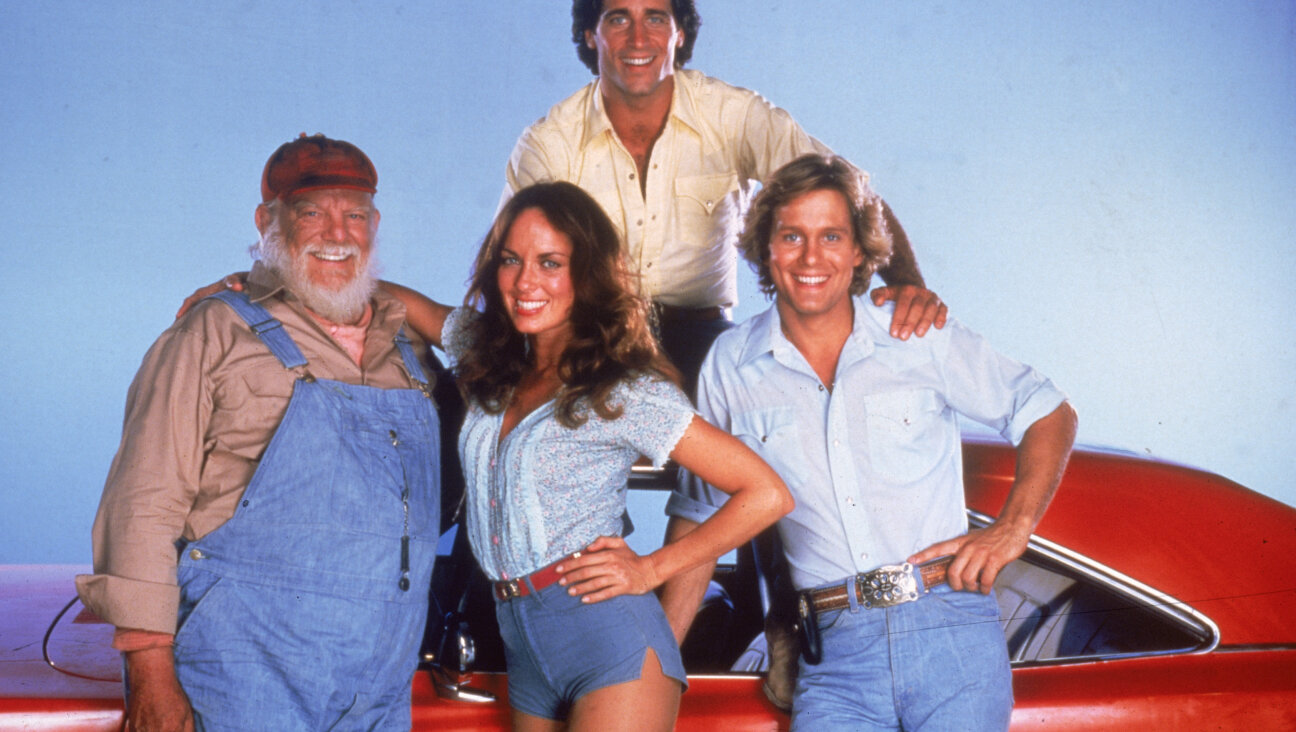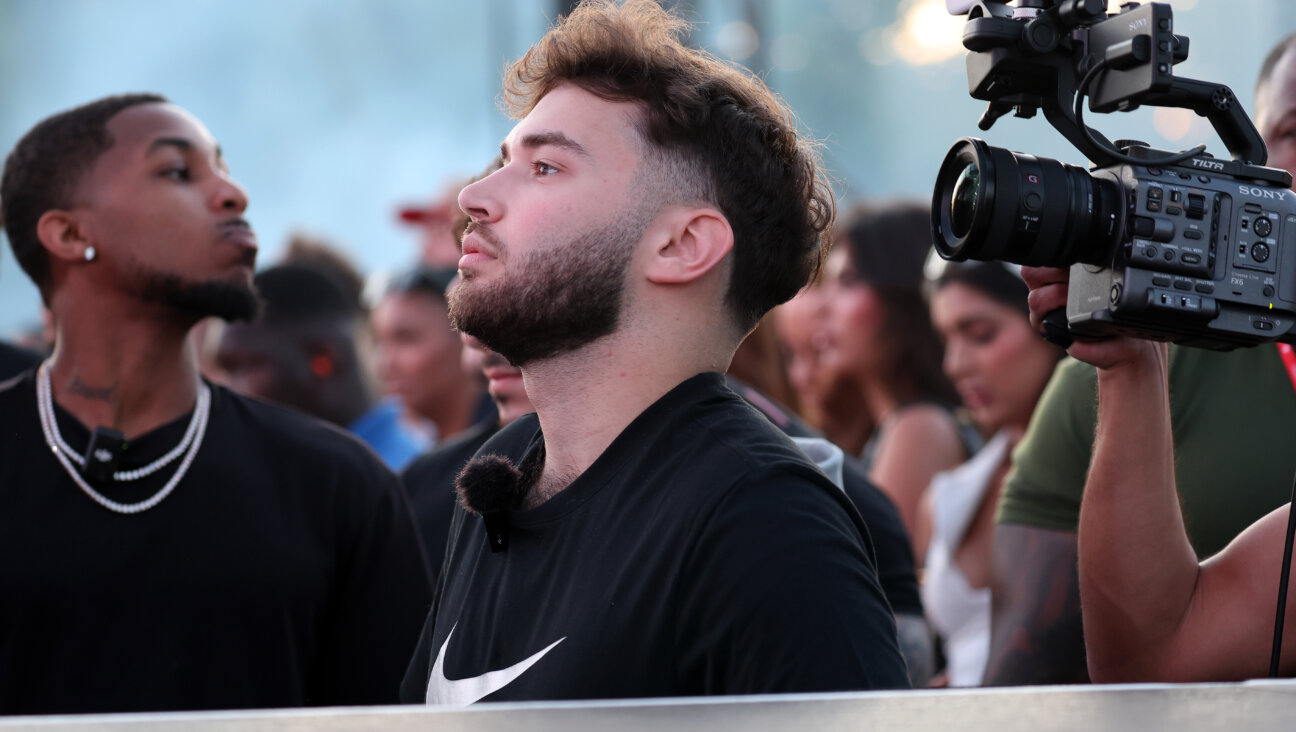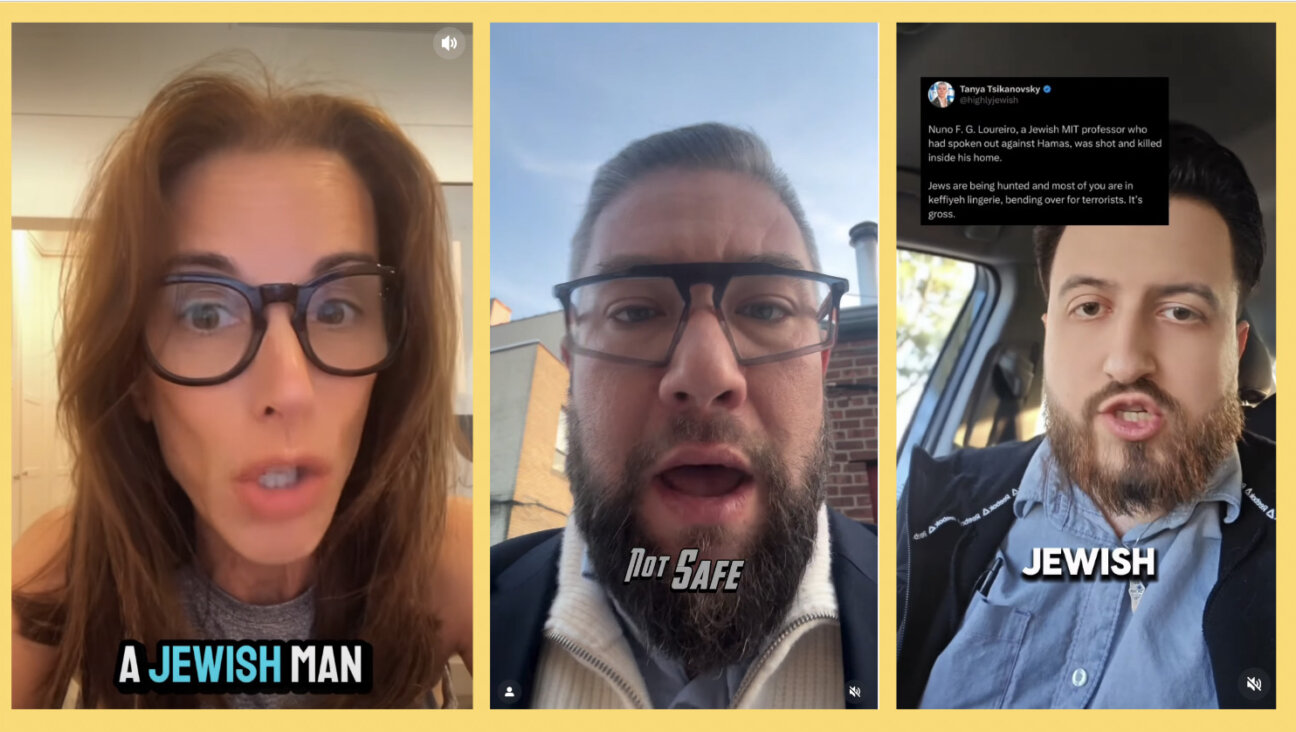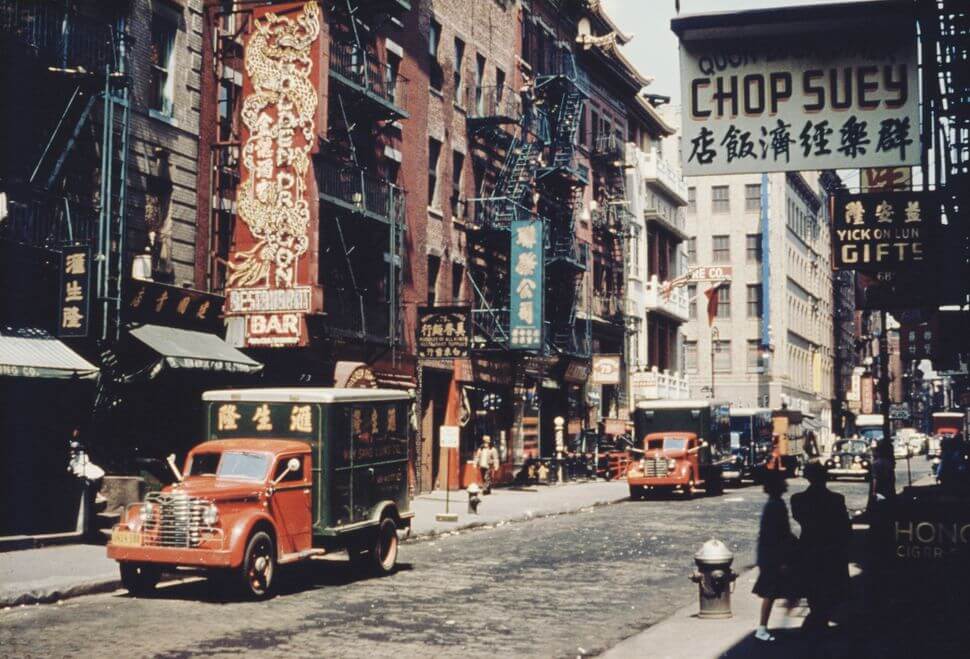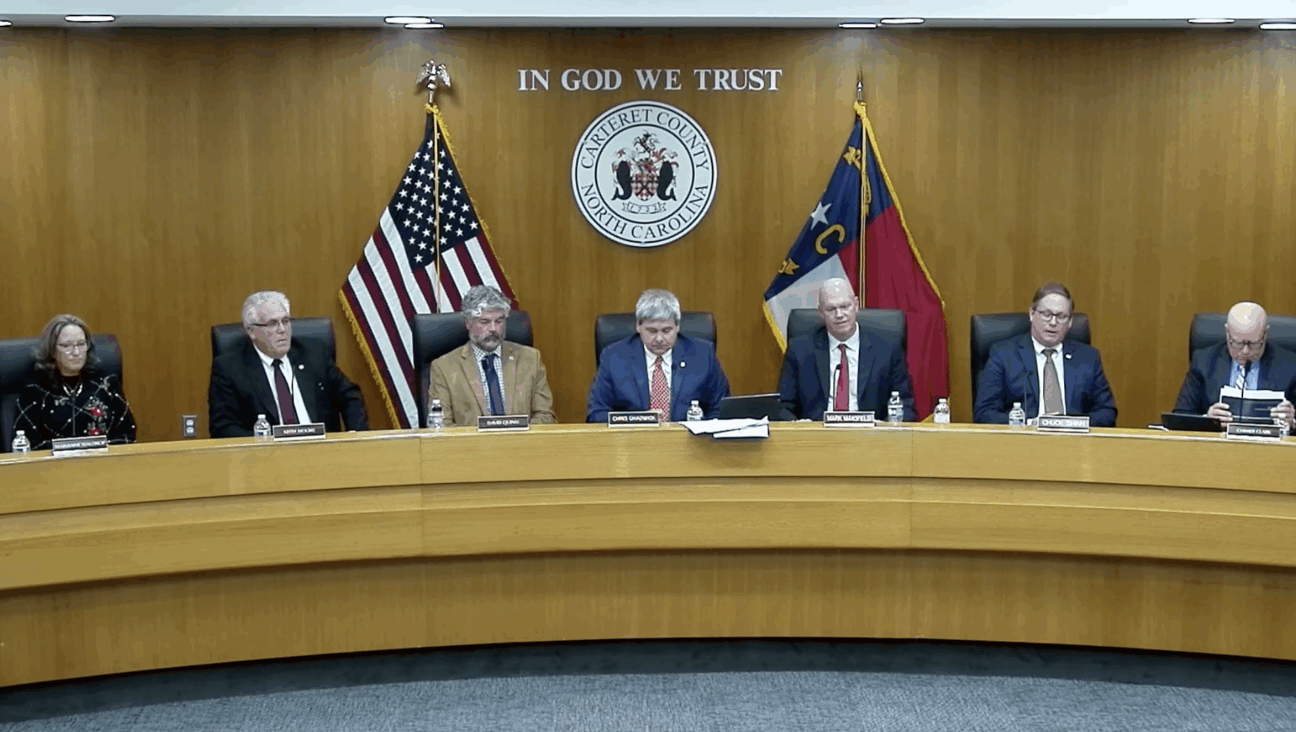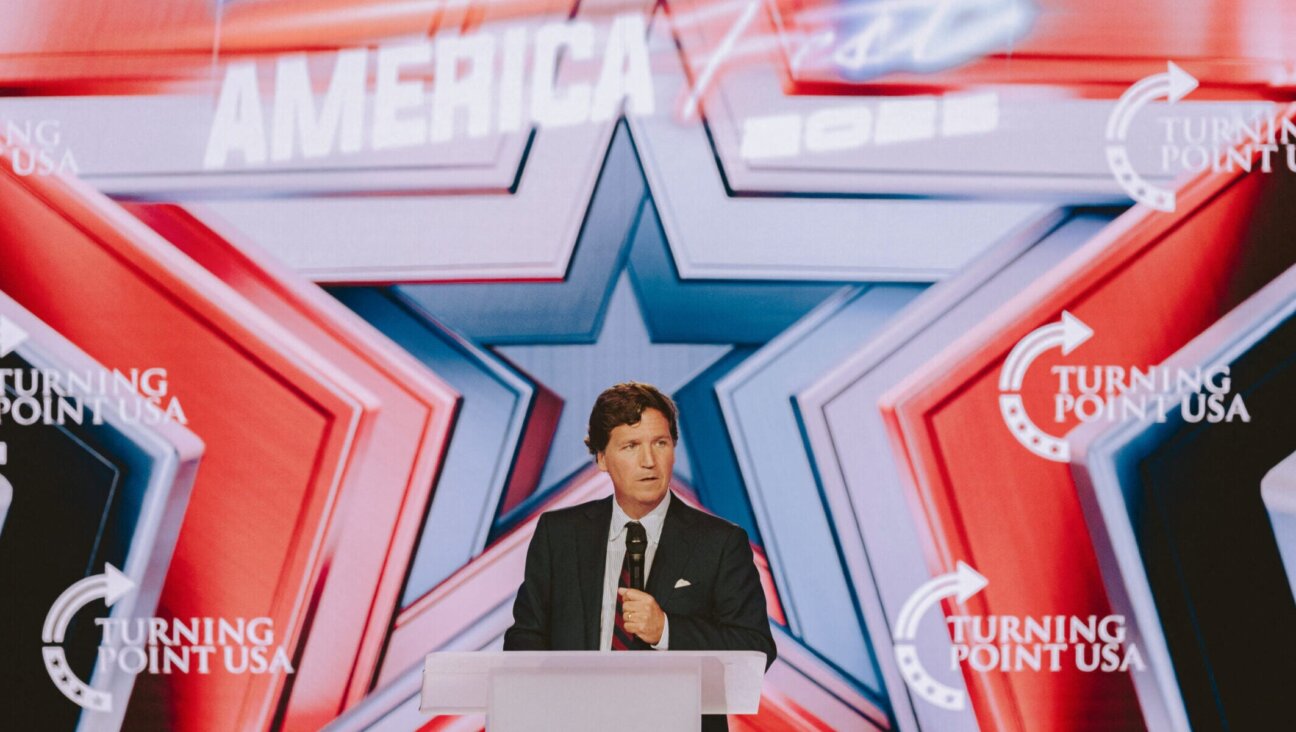In an Orthodox Western, Jewish soul breaks through the tropes
‘Guns and Moses’ misses the mark on plot, but hits a bullseye on Jewish representation
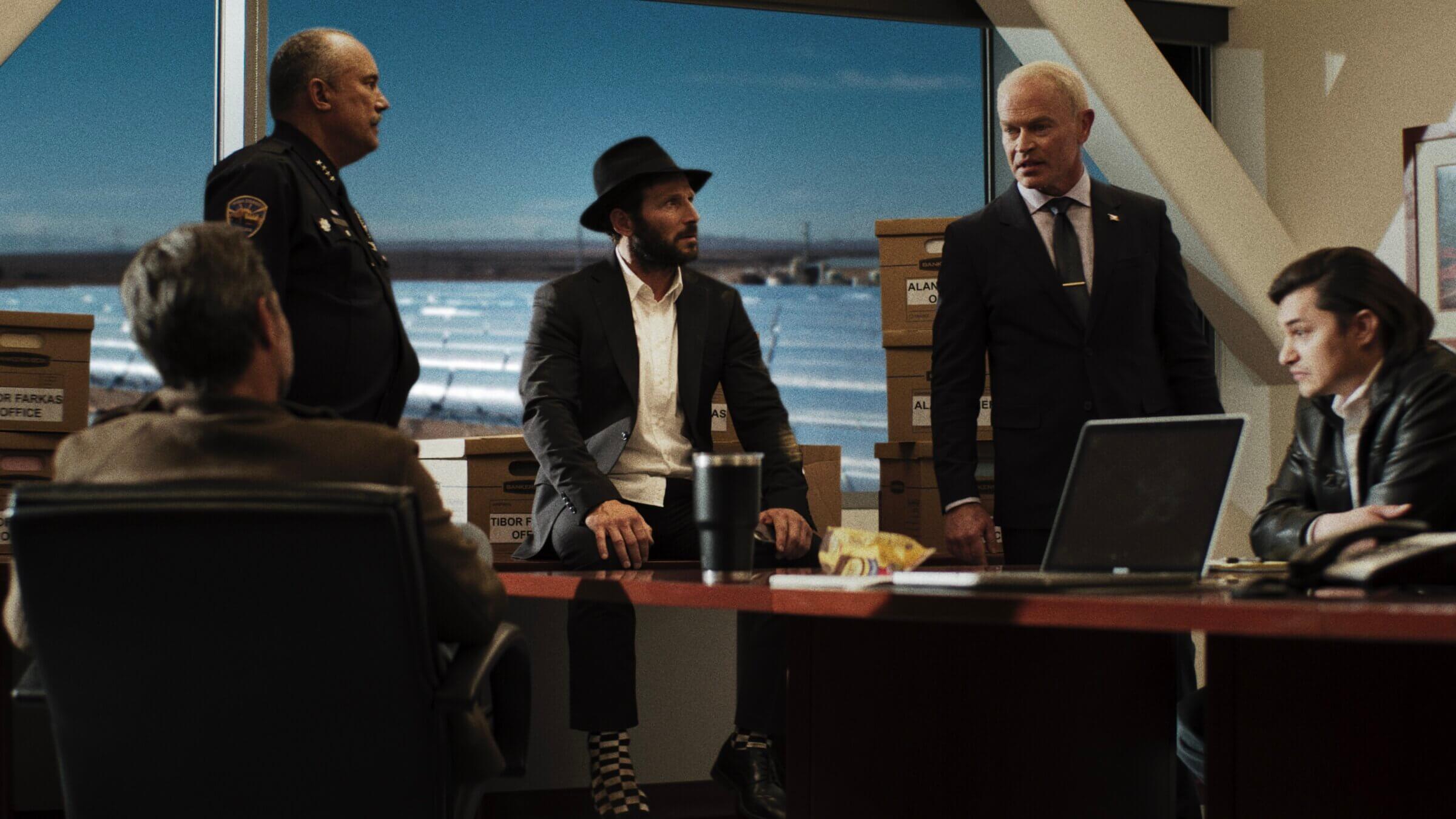
Mark Feuerstein plays Rabbi Mo Zaltzman (center), a small town Rabbi who has to unravel a complex conspiracy. Courtesy of Salvador Litvak
This story contains spoilers for the film Guns and Moses.
When a member of his congregation, Allan Rosner (Dermot Mulroney), is murdered, the police arrest a young neo-Nazi who has been harassing the congregation. But Rabbi Mo Zaltzman (Mark Feuerstein) isn’t convinced they have the right guy, and decides to do some detective work of his own.
Despite having a setting and poster fitting of a Western, the movie is more Shtisel meets NCIS. Zaltzman possesses a level of nosiness that would make Jessica Fletcher from Murder She Wrote proud, and the film is jam-packed with cliché action sequences fit for cable TV. The writing is hammy, the dialogue overexpository, and although the cast’s performances are heartfelt, it’s not enough to compensate for cheesy lines. “May G-d and your Glock protect you” isn’t just the film’s tag line — it’s a real sentence said somberly by the rabbi’s wife (Alona Tal).
Guns and Moses is also rife with plot holes and capped by an ending devoid of logic. (If you already successfully framed Zaltzman for three murders, why would you then murder him and his family, meaning you have to come up with a new person to frame for those murders?) But while it is by no means a cinematic masterpiece, the film is notable for being a positive deviation from the typical portrayal of Jews in movies.
The relationship between Jews and Westerns has a long history, but Jews are rarely depicted in these films in a positive light. Often they are effeminate, weak and cowardly, like Plotz the Peddler in The Light of Western Stars. If they are given dignity, it’s usually as an outsider, an Old World immigrant who is harmless but unable to assimilate and fit in with the community.
Guns and Moses pushes against both tropes. Although Zaltzman is apprehensive about handling a firearm at first, he quickly becomes a natural gun slinger. He’s neither cowardly nor foolish, spending the whole movie doing the investigative work the detectives refuse to do. Even after someone attempts to kill him, Zaltzman is undeterred. And instead of a Stetson, he does it all while wearing the black hat of an Orthodox rabbi.
Instead of being outsiders, Zaltzman and his congregants seem at home in the fictional town of High Desert, California. Yes, there are the occasional neo-Nazis, but on the whole, the Jewish community is accepted, receiving genuine allyship from the non-Jewish characters, at least until the rabbi starts sticking his nose where it doesn’t belong.
The fact that religiosity is not portrayed as being at odds with strength is also a significant change in how Judaism is treated in film. The traditions are neither mocked nor turned into a punchline. The movie shows the spiritual power of a niggun, or wordless melody. Even the former-neo-Nazi-turned-ally is moved to sing along with the rabbi as the final battle of the film begins. Rabbi Baruch Chait’s Kol ha’olam kulo (“The Whole Entire World”) is the rallying cry in the climax.
Guns and Moses also captures the perilous times Jews are living in and the questions we have to struggle with about our own security. At first, Moishe questions the congregation’s security guard Brenda’s assertion that he and his wife should get gun training. “Every Jew a .22, is that it?” he asks sarcastically.
But by the end of the movie, it seems the audience is supposed to have learned that yes, we need Glocks in our tallis bags. After the credits, the director, Salvador Litvak (When Do We Eat?, Saving Lincoln), appears on screen, lamenting the rise in antisemitism and asserting that Jews will fight back — and not softly. Although he was never a fan of guns, Litvak says, times have changed.
This message feels timely for 2025, but for me, I was thrown back to 2019, after the Tree of Life shooting in Pittsburgh. As the youth representative on the board of my synagogue, I participated in a security walk through of our premises and a training by a former SWAT officer on how to lead congregants to safe zones in the case of an active shooter. I remember sitting through congregants’ complaints about our decision to have police present at Shabbat, arguing that it ruined the spiritual atmosphere.
I could understand that, on a holy day, it felt inappropriate to face a fully armed police officer — but could we justify risking lives to keep the vibes? There was tension between what we wanted the reality to be — a world in which we could feel safe without police — and the truth: that gunmen were increasingly targeting synagogues.
This same tension is present in Guns and Moses. Zaltzman’s initial determination to not turn to violence, and his eventual concession, is a real conundrum. Not everyone will agree that the solution is arming congregants and clergy, but the conflict is a resonant one.
I’m not sure if the solution is imagining our rabbis as Old West sheriffs, but at least it’s a change from portraying Jews as victims. For all the campiness of Guns and Moses, it’s nice to be the hero for once.


